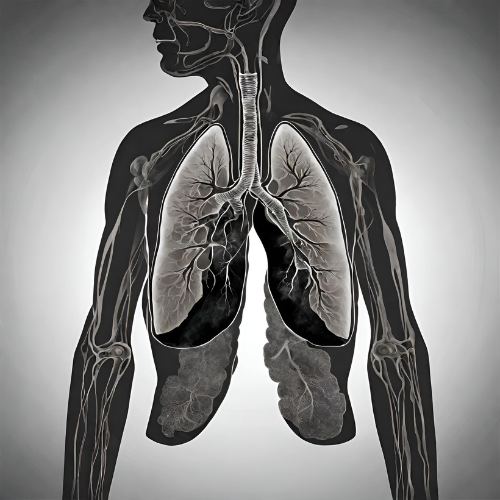Understanding Black Lung Disease: A Comprehensive Guide
What is Black Lung Disease? Black Lung Disease, also known as coal workers’ pneumoconiosis (CWP), is a chronic respiratory condition caused by prolonged exposure to coal dust. It primarily affects coal miners and others who work in coal mines or similar environments where coal dust is present.
Types of Black Lung Disease:
- Simple Coal Workers’ Pneumoconiosis (CWP): This form of the disease is characterized by the accumulation of coal dust particles in the lungs, leading to inflammation and scarring.
- Complicated Coal Workers’ Pneumoconiosis: In this advanced stage, the accumulation of coal dust causes significant scarring and fibrosis in the lungs, impairing lung function and leading to respiratory symptoms.
Symptoms of Black Lung Disease:
- Chronic cough
- Shortness of breath
- Chest tightness
- Wheezing
- Fatigue
- Bluish skin (cyanosis) in severe cases
Causes of Black Lung Disease: The primary cause of Black Lung Disease is the inhalation of coal dust particles over an extended period. When coal dust is inhaled, it accumulates in the lungs and triggers an inflammatory response, leading to tissue damage and scarring. Factors such as the duration and intensity of exposure, as well as the size and composition of the coal dust particles, can influence the development and severity of the disease.
Risk Factors for Black Lung Disease:
- Occupational exposure to coal dust
- Working in coal mines, coal processing plants, or other industries where coal dust is present
- Lack of adequate ventilation and dust control measures in the workplace
- Smoking, which can exacerbate lung damage and increase the risk of developing complications from Black Lung Disease
Diagnosis of Black Lung Disease: Diagnosing Black Lung Disease typically involves:
- Medical history and physical examination
- Chest X-ray or CT scan to detect the presence of coal dust and assess lung damage
- Pulmonary function tests to evaluate lung function and capacity
- Arterial blood gas analysis to measure oxygen and carbon dioxide levels in the blood
Pharmacokinetics and Pharmacodynamics: Pharmacokinetics refers to how medications are absorbed, distributed, metabolized, and excreted by the body, while pharmacodynamics refers to how medications exert their effects on the body. In the case of Black Lung Disease, pharmacological treatment focuses on managing symptoms and slowing disease progression.
Pharmacological Treatment:
- Bronchodilators: Medications that help open the airways and improve airflow, relieving symptoms such as coughing and shortness of breath.
- Inhaled corticosteroids: Anti-inflammatory medications that reduce airway inflammation and may help alleviate respiratory symptoms.
- Oxygen therapy: Supplemental oxygen to improve oxygen levels in the blood and relieve symptoms of hypoxia (low oxygen levels).
- Vaccinations: Annual influenza vaccines and pneumococcal vaccines to reduce the risk of respiratory infections and complications.
Non-Pharmacological Treatment:
- Avoiding further exposure to coal dust by changing occupations or implementing dust control measures in the workplace.
- Pulmonary rehabilitation: Exercise programs, breathing techniques, and education to improve lung function and quality of life.
- Supportive care: Nutritional counseling, smoking cessation programs, and emotional support to manage the physical and psychological impact of the disease.
Conclusion: Black Lung Disease is a serious respiratory condition caused by prolonged exposure to coal dust in occupational settings. While there is no cure for the disease, early diagnosis and intervention can help manage symptoms and improve quality of life for affected individuals. By understanding the causes, symptoms, diagnosis, and treatment options for Black Lung Disease, individuals can take steps to protect themselves from occupational hazards and seek appropriate medical care if needed. If you or someone you know is at risk of Black Lung Disease due to occupational exposure, it is essential to prioritize safety measures and undergo regular health screenings to detect any signs of lung damage early on.




